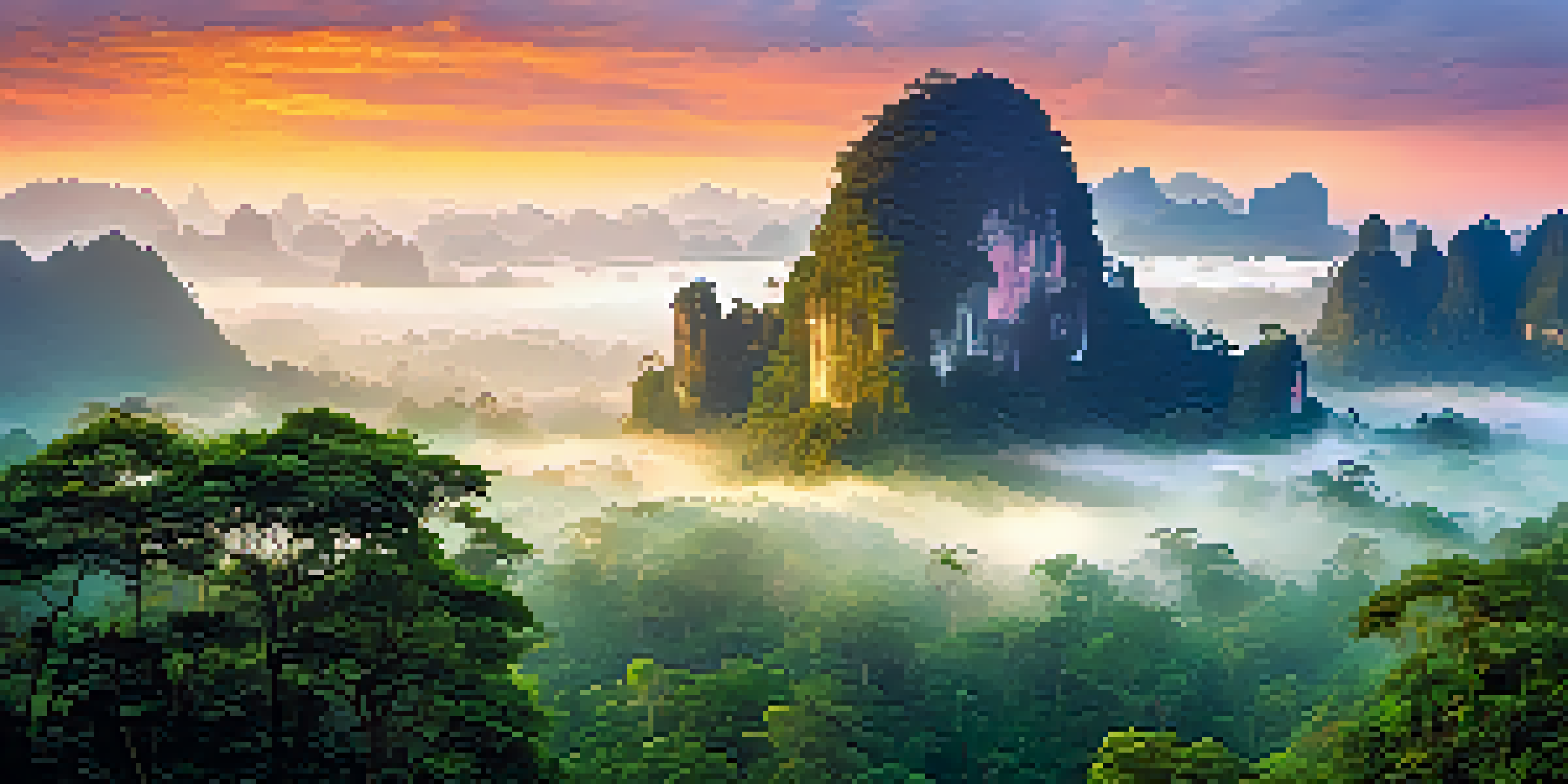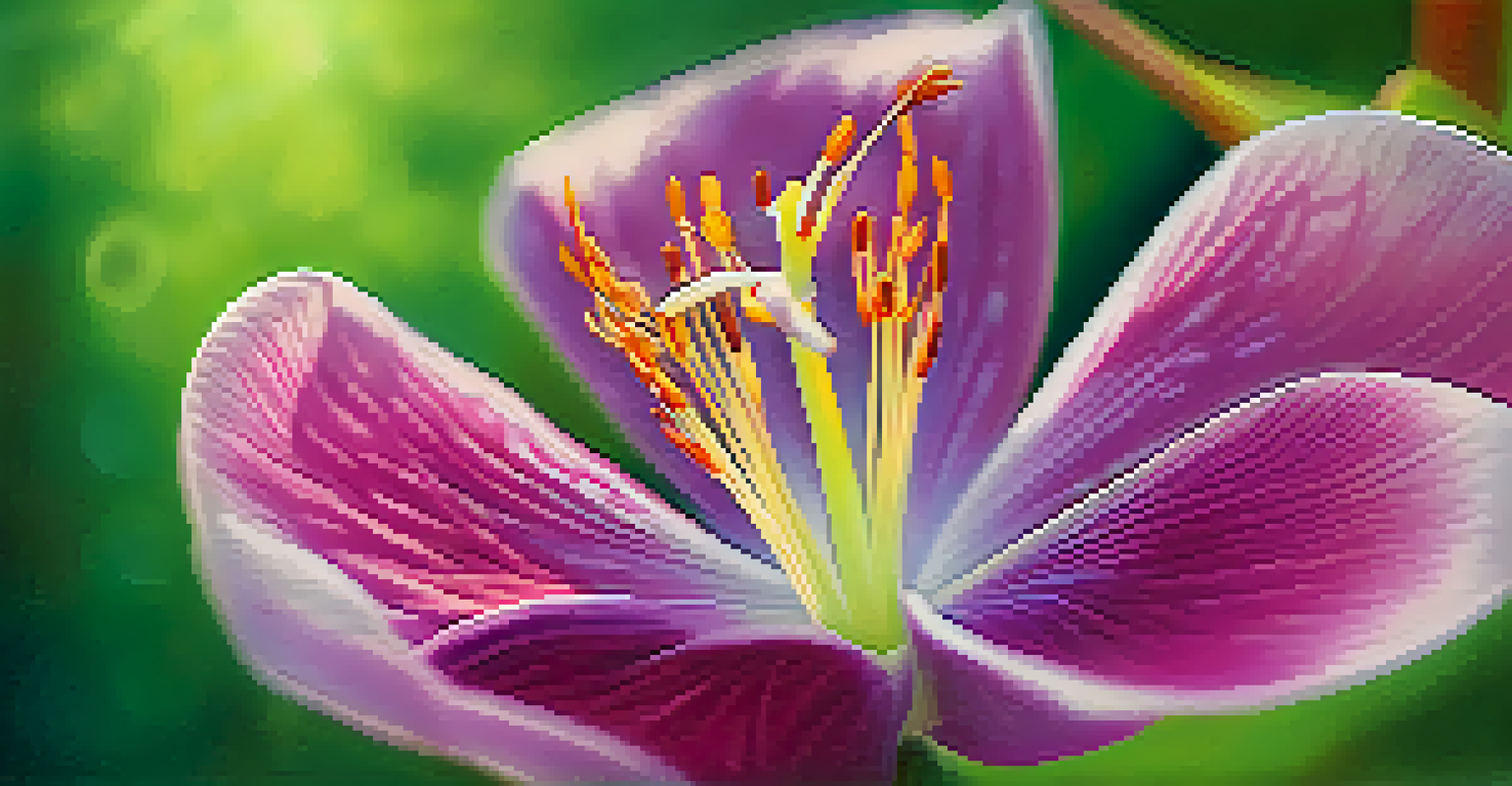A Photographer's Guide to Thailand's National Parks

Discover the Diversity of Thailand's National Parks
Thailand is home to an array of national parks, each offering unique landscapes that are a photographer's dream. From lush rainforests to towering limestone cliffs, the diversity is astounding. Whether you're drawn to the vibrant wildlife or the serene lakes, there's something for every type of photographer.
In every walk with nature one receives far more than he seeks.
Each park boasts its own ecosystem, making it essential to choose the right one based on your interests. For instance, Khao Sok National Park is famous for its ancient rainforests and diverse fauna, while Erawan National Park is known for its stunning waterfalls. This variety provides endless opportunities for capturing breathtaking shots.
As you plan your visit, consider what type of photography you want to focus on. Do you prefer landscapes, wildlife, or perhaps macro photography of the unique flora? Understanding the unique characteristics of each park will help you pack the right gear and prepare for a successful photography trip.
Essential Photography Gear for National Parks
Packing the right photography gear is crucial for capturing the essence of Thailand's national parks. A versatile camera and a selection of lenses will allow you to adapt to various environments and subjects. A good zoom lens is especially helpful for wildlife photography, while a wide-angle lens is perfect for expansive landscapes.

Don't forget to bring ample memory cards and spare batteries, as you'll likely find yourself taking more photos than expected. A sturdy tripod is another must-have, especially for capturing long exposures of waterfalls or low-light scenes. Additionally, consider packing a polarizing filter to enhance the colors and reduce glare in bright conditions.
Explore Thailand's Diverse Parks
Thailand's national parks offer a variety of ecosystems, making them ideal for different photography styles.
Lastly, a lightweight backpack will serve you well as you hike through the parks. It should provide enough space for your gear while keeping it secure as you navigate the rugged terrain. With the right equipment in tow, you'll be ready to capture the beauty of Thailand's national parks like a pro.
Best Times to Visit Thailand's National Parks
Timing your visit is key to getting the best photography opportunities in Thailand's national parks. The cool, dry season from November to February offers pleasant weather and clearer skies, ideal for landscape photography. During this time, wildlife is also more active and easier to spot, making it perfect for animal enthusiasts.
Photography is the story I fail to put into words.
However, the rainy season from May to October has its own charm, with lush greenery and dramatic skies that can create stunning backdrops. The waterfalls are particularly impressive during this period, providing a chance to capture powerful water flow. Just be prepared for sudden downpours and muddy trails.
Ultimately, the best time to visit depends on your photographic goals. Researching seasonal conditions and being flexible with your plans can lead to unexpected and rewarding photographic experiences.
Capturing Wildlife: Tips and Techniques
Photographing wildlife can be both thrilling and challenging, especially in the national parks of Thailand. To increase your chances of getting that perfect shot, it's important to be patient and observant. Early mornings and late afternoons are often the best times to spot animals, as they are most active during these cooler hours.
Using a long telephoto lens allows you to maintain distance from wildlife while still capturing stunning details. Remember to keep your noise levels down and minimize movement to avoid startling the animals. Sometimes, the best shots come from simply waiting quietly in one spot.
Essential Gear for Photographers
Having the right photography gear, including lenses and a sturdy backpack, is crucial for capturing the beauty of the parks.
Additionally, familiarize yourself with the types of wildlife you hope to encounter. Knowing their habits and preferred habitats can significantly improve your chances of capturing memorable photographs. With practice and persistence, you'll find yourself with an impressive collection of wildlife shots.
Landscape Photography: Tips for Stunning Shots
Landscape photography in Thailand's national parks offers a chance to capture breathtaking natural beauty. To create stunning images, consider the composition of your shots. Techniques such as the rule of thirds can help you frame your subjects in an appealing way, leading to more balanced images.
Lighting plays a crucial role in landscape photography. The golden hour, shortly after sunrise and before sunset, provides soft light that enhances colors and adds depth to your photos. Experiment with different angles and perspectives to find unique viewpoints that showcase the park's beauty.
Don't forget to pay attention to foreground elements, such as interesting rocks or plants, to add depth to your landscape photos. With a little creativity and experimentation, you can turn the stunning vistas of Thailand's national parks into captivating works of art.
Macro Photography: Exploring the Details
While grand landscapes are a highlight of Thailand's national parks, don't overlook the small wonders that macro photography can reveal. From intricate flowers to tiny insects, there's a wealth of detail waiting to be captured. Bringing a dedicated macro lens or extension tubes will allow you to focus on these smaller subjects with precision.
When approaching macro photography, lighting is particularly important. Natural light can create beautiful effects, but using a flash or reflector can help illuminate your subject and reduce harsh shadows. Experimenting with different angles will also help you find the best perspective for capturing intricate details.
Timing Matters for Great Shots
Visiting during the right season can significantly enhance your photography opportunities with optimal weather and wildlife activity.
As you wander through the parks, take your time to observe the smaller elements of the environment. You'll be surprised at the stunning compositions that can emerge from even the tiniest subjects. Macro photography allows you to showcase the beauty of nature in an entirely different way.
Safety Tips for Photographing in National Parks
Safety should always be a priority when exploring Thailand's national parks. Before you embark on your photography adventure, familiarize yourself with the park's rules and regulations. It's essential to respect wildlife and maintain a safe distance from animals to avoid potential dangers.
Additionally, be prepared for the elements. The weather can change rapidly in national parks, so packing appropriate clothing and gear is crucial. A sturdy pair of hiking boots will keep you comfortable on rugged trails, and bringing a rain jacket can save you from getting soaked in unexpected downpours.

Lastly, consider traveling with a buddy or joining a guided tour. Having a companion can enhance your experience and provide an extra layer of safety in remote areas. By staying aware and prepared, you can focus on capturing the beauty of Thailand's national parks while ensuring a safe adventure.
Post-Processing Tips for Stunning Results
Once you've captured your stunning photographs, the next step is post-processing. Editing software like Adobe Lightroom or Photoshop can help enhance your images, making them pop with color and detail. It's important to find a balance between enhancing your photos and keeping them natural.
Start by adjusting exposure, contrast, and color balance to bring out the best in your images. Cropping can also help improve composition and draw attention to your main subject. Don’t hesitate to use tools like sharpening and noise reduction to refine your photos further.
Finally, consider sharing your work online or creating a portfolio to showcase your photography journey through Thailand's national parks. This not only allows you to share your passion but also connects you with fellow photographers who share your love for nature and adventure.